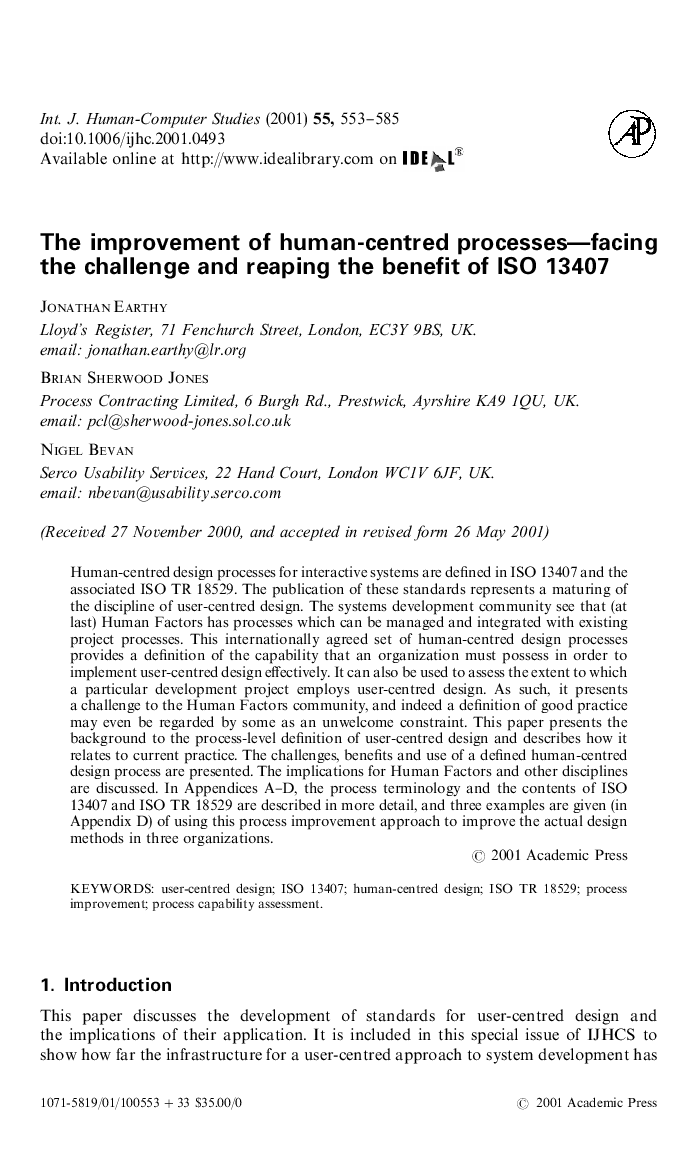ترجمه فارسی عنوان مقاله
بهبود فرآیندهای انسان محور __ مواجه با چالش و برداشت سود از ISO 13407
عنوان انگلیسی
The improvement of human-centred processes—facing the challenge and reaping the benefit of ISO 13407
| کد مقاله | سال انتشار | تعداد صفحات مقاله انگلیسی |
|---|---|---|
| 16831 | 2001 | 33 صفحه PDF |
منبع

Publisher : Elsevier - Science Direct (الزویر - ساینس دایرکت)
Journal : International Journal of Human-Computer Studies, Volume 55, Issue 4, October 2001, Pages 553–585
ترجمه کلمات کلیدی
13407 - 18529 -
طراحی کاربر محور - طراحی انسان محور -
بهبود فرایند - ارزیابی قابلیت فرایند
کلمات کلیدی انگلیسی
user-centred design,ISO 13407,human-centred design,ISO TR 18529,
process improvement,process capability assessment

